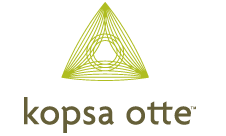Brenda, we published this article on our blog back in February. Here it is again. I hope this helps. Larry
At a recent program I gave in Wichita Kansas a couple of the salon owners challenged me when I was talking about increasing prices. They said that I did not understand that they lived in a small town and that if they increased their prices they would lose many of their clients. They said that there were several salons in their small towns that their clients would go to. I asked them what they charged and they told me $25 for a cut and style. When asked when they last increased their prices they said that it was three years ago and that nobody in town was increasing prices.
That is not the first time I have heard that excuse for not increasing prices. My comment to them is that if they were providing great customer service they would not lose clients by doing normal increases. I also told them that when my wife Maggie was cutting hair 11 years ago, she was charging $65 when everyone around her was charging $20 to $40. I also told them that every time she increased her prices she got busier. After I said this, several people sitting next to them agreed that higher prices many times can bring more business.
Now we have a study about the price of wine that proves I was correct.
Researchers at Stanford Graduate School of Business have finally proven what most of us suspected long ago. Expensive wine tastes better!
Researchers used MRIs to study Caltech grad students' brains as they swallowed five red wines priced at $5, $10, $35, $45, and $90 per bottle. They found that as the price of the wine rose, so did the activity in the subjects' medial orbitofrontal cortexes. (Apparently, that's the part of the brain that experiences pleasure.)
The "catch," of course, is that the subjects didn't drink five different wines -- they drank three. The $45 wine was really the $5 wine -- and the $10 wine was really the $90 wine.
So why did the subjects like the $5 wine more when they thought it was $45? And why did the $90 wine taste like swill when they thought it cost $10? Researchers concluded that the perceived price of the wine actually affected real quality -- at least, "real" as interpreted by the medial orbito . . . er, brain.
So what's the lesson? (If you answered "you can fool some of the people some of the time," well, you're right -- but that's not what I'm looking for.)The real lesson is that the price you charge for your service affects the value your clients see in it. If you're offering a $90 bottle of wine -- and you want your clients to value it at $90 -- don't pour it into a cardboard box with a $10 price tag!
Do you give your clients more value than your competitors down the street?
Are you charging what you're worth or are you pouring $90 wine into a $10 cardboard box?
Clients will pay more for your service if they see you give them more. The Stanford study proves they'll even feel better paying more! Competing on price is a losing proposition unless you offer the lowest price of all. It's better to compete on value. Give your clients a reason to do business with you, not your competition. Give them a reason to pay more. And they will. Really, they will. The key is showing confidence in your value -- and when you do that, you sell yourself, not your price. You should find it much easier selling yourself than your fee.
Larry Kopsa CPA


